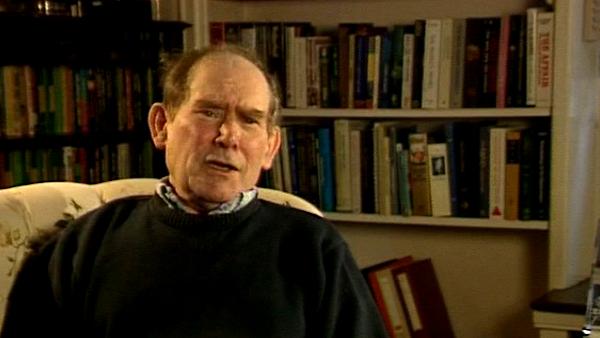NEXT STORY

Experimenting with adding messengers to ribosomes
RELATED STORIES

NEXT STORY

Experimenting with adding messengers to ribosomes
RELATED STORIES


|
Views | Duration | |
|---|---|---|---|
| 111. A completely interlocking theory | 212 | 01:24 | |
| 112. Lab space | 276 | 01:37 | |
| 113. Experimenting with adding messengers to ribosomes | 216 | 03:55 | |
| 114. The state of biochemistry in Britain | 258 | 02:54 | |
| 115. 1962: a new lab and a new way of working | 249 | 01:04 | |
| 116. The importance of understanding molecular structure (Part 1) | 263 | 03:01 | |
| 117. The importance of understanding molecular structure (Part 2) | 236 | 04:36 | |
| 118. Looking for a new subject and inventing names | 239 | 04:16 | |
| 119. DNA replication | 235 | 02:39 | |
| 120. DNA replication: the first experiment | 226 | 04:23 |


By this time Francis had become extremely skilled at exacting space from various departments. Our phage lab was in the old museum in… in zoology, which had a whale in it at one time. We borrowed the space from the professor of zoology. It was a wonderful lab, because it had… it was just a… like a corridor with a row of windows, and all the people you could be… it was a lab that always loved because I'm a… I'm a mad hatter in the sense of what I like is to have a bench and then I make… do an experiment here, and then move on to the next place, do another experiment and have someone clean it up behind me – just circulate. What was so interesting is that we had a lot of people working with us and we used to watch the people walking by, you know, and you could say to people, 'Oh, you see… you see that man, that's Professor Dirac, you see'. Once there was in the… there was a restaurant here at the Friar House, because this is a… this is another uncanny feeling of being in this part, and we looked in and there was a tea room and there was a man sitting there with a elderly lady, and I said to this friend… I said, 'Just have a look in that room, in… in the tea room; there are two people who changed the world'.
[Q] Who was it?
It was Otto Frisch and his aunt, Lise Meitner, sitting there.
South African Sydney Brenner (1927-2019) was awarded the Nobel Prize in Physiology or Medicine in 2002. His joint discovery of messenger RNA, and, in more recent years, his development of gene cloning, sequencing and manipulation techniques along with his work for the Human Genome Project have led to his standing as a pioneer in the field of genetics and molecular biology.
Title: Lab space
Listeners: Lewis Wolpert
Lewis Wolpert is Professor of Biology as Applied to Medicine in the Department of Anatomy and Developmental Biology of University College, London. His research interests are in the mechanisms involved in the development of the embryo. He was originally trained as a civil engineer in South Africa but changed to research in cell biology at King's College, London in 1955. He was made a Fellow of the Royal Society in 1980 and awarded the CBE in 1990. He was made a Fellow of the Royal Society of Literature in 1999. He has presented science on both radio and TV and for five years was Chairman of the Committee for the Public Understanding of Science.
Tags: Friar House, Francis Crick, Paul Dirac, Otto Frisch, Lise Meitner
Duration: 1 minute, 38 seconds
Date story recorded: April-May 1994
Date story went live: 24 January 2008